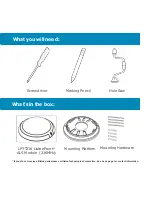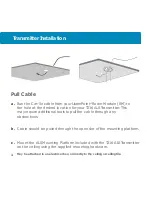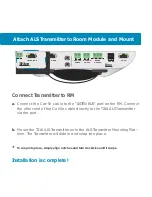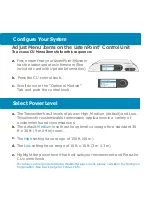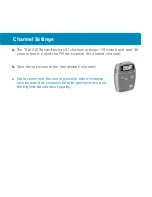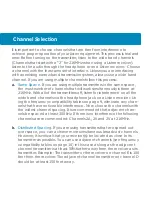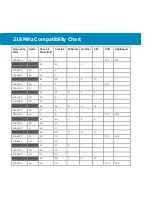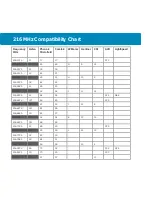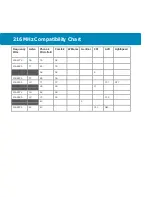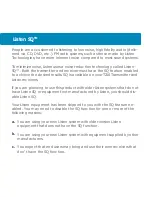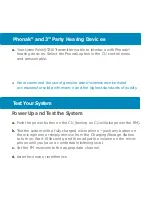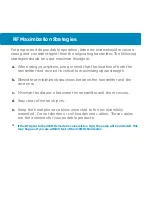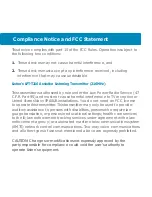
Channel Selection
It is important to choose channels that are free from interference to
achieve proper operation of your Listen equipment. This process is trial and
error. Before turning on the transmitter, listen to the wide band channels
(Channels that start with a “2” for 216MHz when using a Listen receiver).
Listen to the audio through the headphone or on a Listen receiver. Choose
a channel with the least amount of interface. Unless you are interfacing
with an existing narrowband transmission system, always use a wide band
channel. If you are using multiple channels follow this process:
a.
Same Space
. If you are using multiple transmitters in the same space,
the most number of channels that will work simultaneously is three at
216MHz. With all of the transmitters off, listen for interference on all the
wide band channels via the headphone jack on a Listen receiver. Us-
ing the frequency compatibility tables on page 9, eliminate any chan-
nels that have noticeable interference. Now choose the channels with
the widest channel spacing. It is recommended that adjacent chan-
nels be spaced at least 300 kHz. If there is no interference the following
channels are recommended: Channels 2A, 2K and 2V at 216MHz.
b.
Distributed Spacing.
If you are using transmitters that are spread out
over space, you can achieve more simultaneous broadcast channels.
However, it is critical that your receiver(s) be located as close to its
transmitter as possible. You can use adjacent channels (see frequency
compatibility tables on page 10) in this case as long as the adjacent
channel transmitter is at least 50% further away from the receiver as its
transmitter. Example: The transmitter or the receiver on channel E is 100
feet from the receiver. The adjacent channel transmitter on channel D
should be at least 150 feet away.
Содержание ListenPoint LPT-T216
Страница 1: ...Welcome Let s get started ...


